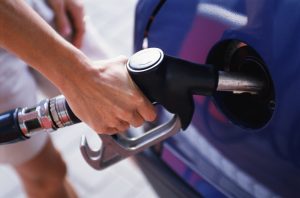Hurricane Harvey demonstrated yet again the high vulnerability of the nation’s fuel production, refining, and transportation systems to catastrophic storms. Harvey struck the Gulf coast of Texas and the nation’s petrochemical epicenter with epic rainfall that forced about half of the area’s 26 refineries to shut down or run at reduced capacity. Included in the shutdown was Motiva’s plant in Port Arthur, the country’s largest refinery. Altogether, the shutdowns eliminated 25 percent of the nation’s gasoline supply. Shutdowns lasted at least a week after the hurricane made landfall in Texas on August 26. Valero’s Corpus Christi terminal was reported to be the first to go back online on September 4.
Largest pipeline closed
Equally damaging was the shutdown of the Colonial Pipeline, the major artery refineries rely on to transport product from Texas up the East Coast as far as Linden, New Jersey. Colonial has two lines, one that can ship 1.37 million billion gallons of gasoline a day (b/d) and a second that moves nearly as much diesel and jet fuel daily. The pipelines supply about 60 percent of all gasoline coming in to the East Coast. The lines were restarted on September 4 and 5.
Southeast prices skyrocket
The storm had a profound impact on gasoline prices, according to the U.S. Energy Information Administration (EIA). On September 6, the EIA reported the following:
- U.S. retail gasoline prices on Monday, September 4, averaged $2.68 per gallon (gal), 28 cents/gal higher than prices a week before.
- Along the East Coast and Gulf Coast, gasoline prices were 39 cents/gal and 35 cents/gal higher, respectively, than they were a week before.
- Gasoline prices in the Lower Atlantic region increased the most, up 41 cents/gal from the week before.
- Texas and Florida saw increases of 40 cents/gal. Gasoline prices in Houston, Miami, New York City, and Boston were up at least 35 cents/gal.
Comparisons to Katrina and Rita
Harvey’s impact on Gulf Coast spot gasoline prices has been on par with the impact from Hurricanes Katrina and Rita, says the EIA. In August 2005, gasoline spot prices rose nearly 30 percent within 1 trading day after the landfall of Hurricane Katrina in Louisiana.
Hurricane Harvey’s impact on gasoline prices was more gradual because refineries in Houston and Port Arthur, Texas, began going offline in the days after the hurricane’s landfall near Corpus Christi. As a result, gasoline prices rose steadily for 4 trading days before starting to decline.
Production platforms evacuated
On August 26, the Bureau of Safety and Environmental Enforcement (BSEE) reported that personnel were evacuated from 112 oil and gas production platforms in the Gulf of Mexico, or 15.2 percent of the 737 manned platforms (https://www.bsee.gov/newsroom). The BSEE also reported that approximately 24.49 percent, or 428,568 barrels, of the 1,750,000 barrels of oil produced per day in the Gulf was shut in. It is also estimated that approximately 25.94 percent, or 835 million cubic feet per day, of the 3,220 million cubic feet per day of natural gas production the Gulf had been shut in.
In its final Hurricane Harvey report issued Monday, September 4, the BSEE said offshore O&G operators in the Gulf are reboarding platforms and rigs and restoring normal operations. Based on data from offshore operator reports submitted as of late Monday morning, the BSEE said personnel remained evacuated from 14 production platforms.

